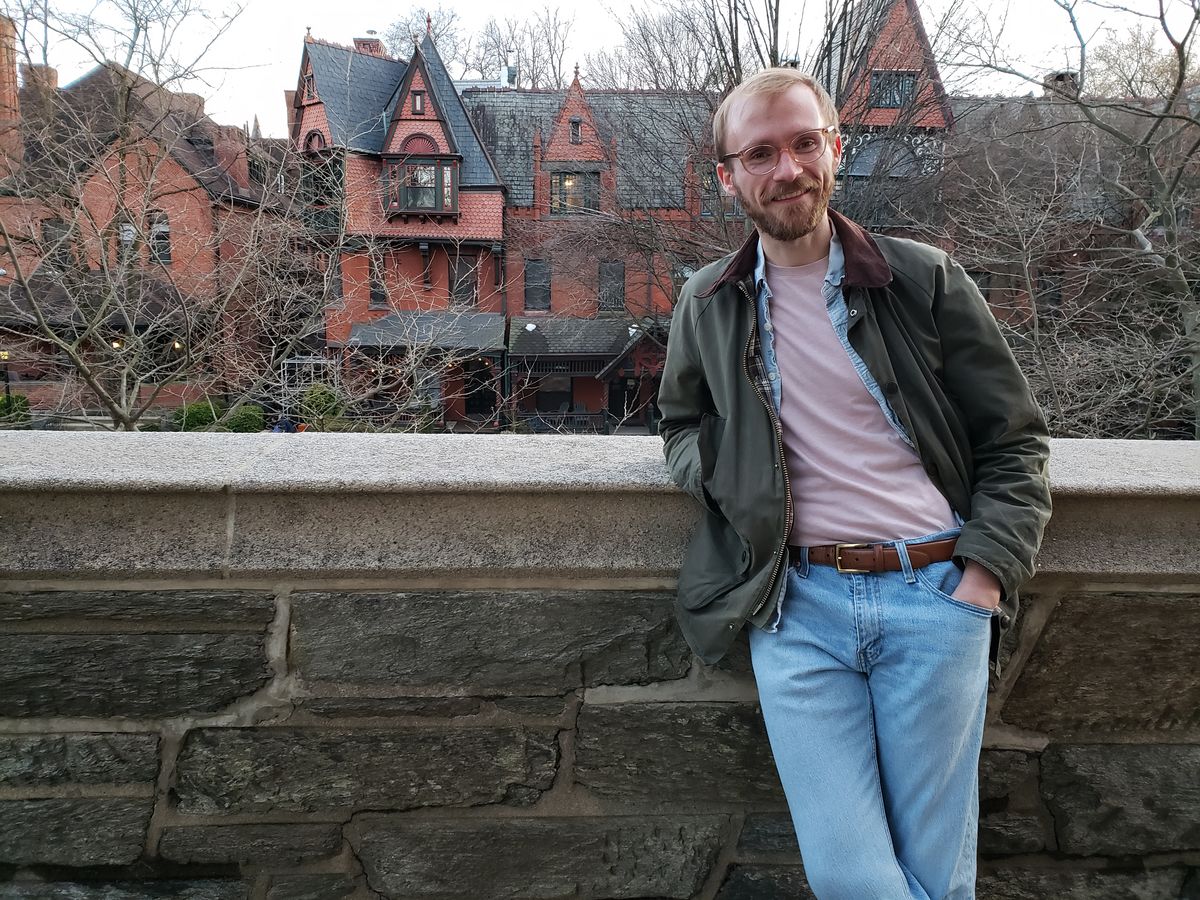MLArch student Sam Emory's award-winning design imagines the remediation of the Philadelphia Energy Solutions refinery site for specific applications such as stormwater management and erosion control.

Sam Emory, a Master of Landscape Architecture (MLArch) student at the Tyler School of Art and Architecture earned first runner-up in the prestigious international Edmund N. Bacon Urban Design Awards Student Competition, sponsored by the Philadelphia Center for Architecture and Design.
Emory's project, “Harvest | Enrich | Grow,” features a comprehensive vision for a mile-long stretch of Philadelphia coastline where a 2019 accident at the 1,300-acre Philadelphia Energy Solutions refinery—the largest refinery on the East Coast at the time—set off a series of explosions that released more than 5,000 pounds of hydrogen fluoride, a deadly gas, and sent pieces of shrapnel weighing more than 19 tons raining down on the site. While the site has been purchased by a new developer with the likely intention of continuing industrial use, Emory's 50-year transformative vision for the location offers an ecologically sound concept, including elements like a recycling facility, soil creation facilities, a garden center, and an urban forest park, among others.
“The closure of the refinery offers an unprecedented opportunity, but the first order of business has to be remediation. We have to ask to what extent the site can be cleaned up to allow for public access, as well as immediate economic uses,” said Emory, a licensed architect with the firm SMP Architects in Philadelphia. “I envisioned the site hosting a diverse array of light industrial uses which are interwoven with ecological restoration and public recreation opportunities.”
Named in memory of Philadelphia’s iconic city planner, Edmund Bacon, one of the most significant city planners of the 20th century, the Urban Design Challenge asks university-level students from around the world to imagine innovative solutions for Philadelphia's neighborhoods, abandoned land and infrastructure. Emory was the only individual award recipient this year—the other honored projects were developed by student teams.
“I joined Tyler's Landscape Architecture program in Fall 2020. In my first studio, the professors—Donna Shumpert and Andrew Hayes—gave us the competition as our design problem. One of the ideas emphasized in the prompt was interdisciplinary collaboration,” said Emory. “I felt like I might be able to put together a submission that addressed architectural questions as well as landscape and urban design questions. My professors were invaluable resources and collaborators—they were an essential part of the process.”
For Emory, the refinery site presented a unique set of challenges, including its sheer size.
“Trying to wrap your head around 1,300 acres and get it down from that scale to the scale of a design problem was difficult. In the competition prompt, we were also asked to think about the economics of the site—it had been a huge employer in the neighborhood,” he said. “But many of the jobs offered at the refinery were dangerous, and there was a real and documented public health impact to the surrounding neighborhoods. I wanted my project to negotiate between these economic imperatives and the need to create public green space that has a restorative effect on the communities that surround it.”
Keeping all of those complexities in mind, Emory hit upon three key ideas: materials recovery, soil creation and ecological restoration.
“Materials recovery is about remediating and reusing things at the site where possible,” he said. “The soil creation piece came out of that same line of thinking. One of my goals was to restore certain portions of the coastline to historic floodplain elevations, and that would normally entail the costly removal and disposal of huge amounts of soil from the site. Could that soil be remediated and reused on site instead?”
The idea of dirt as a material that might be recovered and healed through bioremediation by using plants to extract toxins “led me to the idea of a soil creation facility,” he said. “Urban areas have been suffering from declining soil quality due to legacy pollution, construction and many other factors. Cities, including Philadelphia, also have goals to implement green infrastructure and bolster urban canopy—goals that require quality soil for planting,” he said. “A soil creation facility would build the specifically engineered soils that are needed to meet this rising demand for urban planting projects.”
“This is in every sense a long-term project," he continued. "We have to take the long view if we want to fundamentally re-imagine places like this one, which has been used for generations as a refinery,” he said. “Just grappling with that, with the refinery’s legacy, is a long project in itself. If you really want to invite people into this site, it has to be safe for habitation.”
Originally written by James F. Duffy, Content Manager, Ambler Campus (edited for Tyler's site)
Photo: Temple University Photography